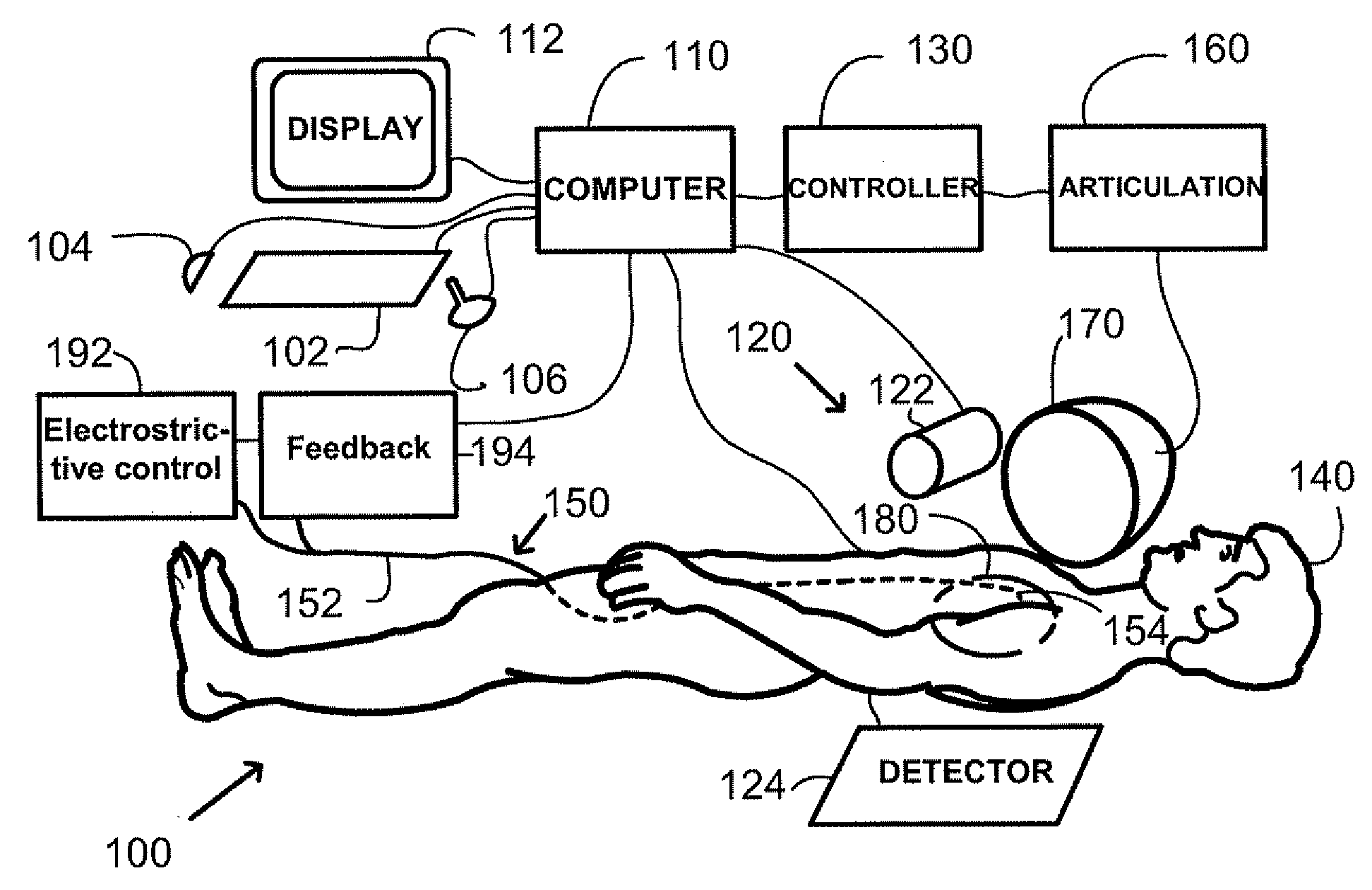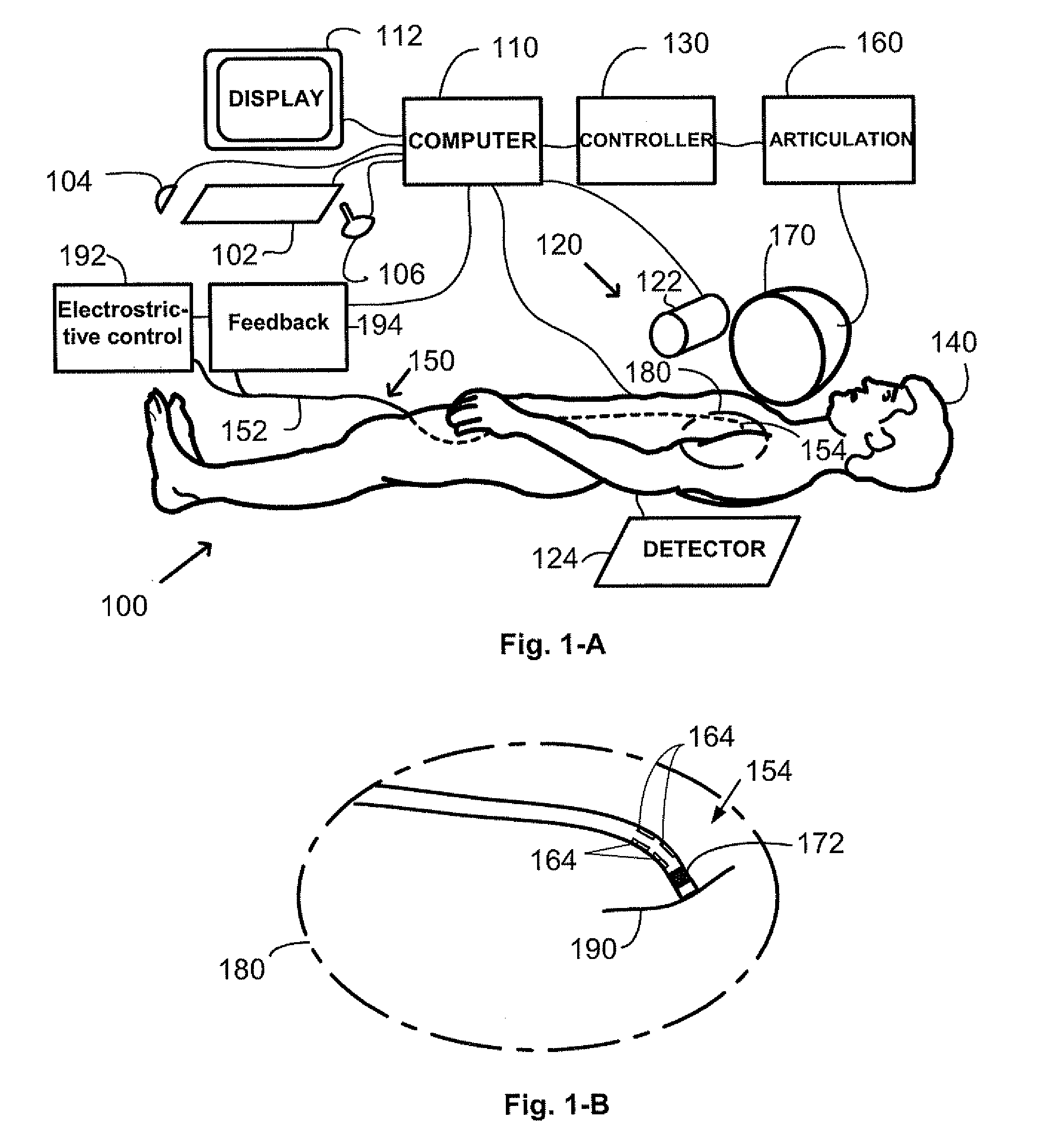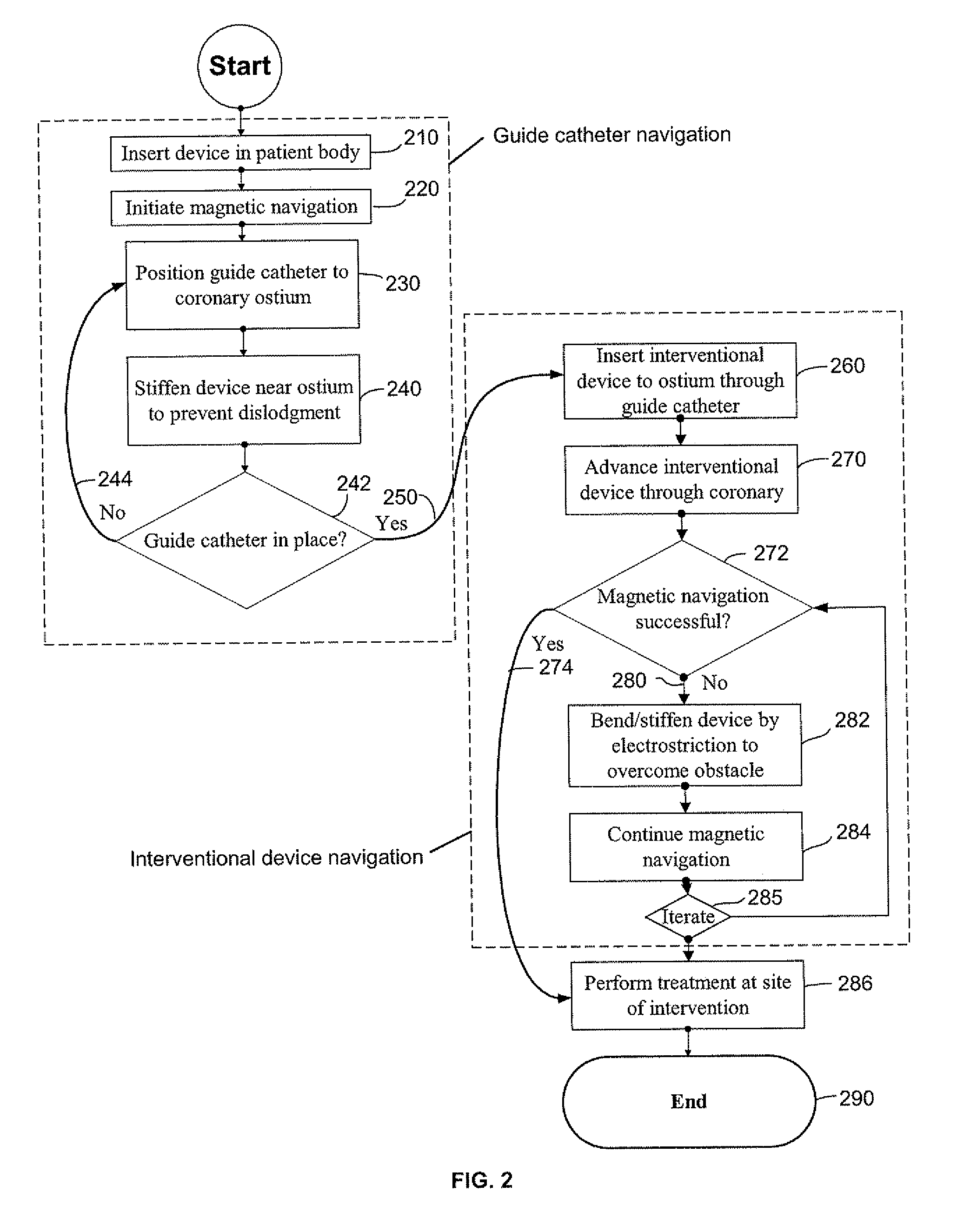Electrostriction Devices and Methods for Assisted Magnetic Navigation
a technology of magnetic navigation and electrostrictive components, applied in the field of medical devices, can solve the problems of limiting conditions that require stronger and larger source magnets, and achieve the effects of enhancing reducing the deflection of medical devices, and improving other aspects of navigation
- Summary
- Abstract
- Description
- Claims
- Application Information
AI Technical Summary
Benefits of technology
Problems solved by technology
Method used
Image
Examples
first embodiment
[0025] In a medical device 300 shown in FIG. 3, at least one electrostrictive element 310 is disposed on a portion or side of the distal end 304 of the medical device 300. The electrostrictive element 310 is adapted to cause the distal end 304 to bend in a given direction. Electrical energy transmitted through fine wires 312 extending along the length of the medical device 300 from the proximal end 302 activates piezoelectric or electrostrictive actuator elements. Although wires and electrostrictive elements are shown for illustration as being external to the device 300 structure, it is understood that preferably element 310 is embedded within the device wall or within the device so that it does not protrude externally; and similarly wires 312 run within the device wall or lumen. A similar remark applies to FIGS. 4 to 7. The application of an electric potential across the electrostrictive element 310 causes the electrostrictive element 310 to change dimension, in turn causing the me...
second embodiment
[0027] A preferred embodiment of a medical device might comprise a plurality of electrostrictive elements 410 affixed about a circumference of the exterior of the medical device 400 as in FIG. 4. Combinations of voltages applied to the electrostrictive elements 410 could then deflect the distal end 404 of the medical device 400 in any direction without requiring twisting the proximal end 402. In a medical device 400, the medical device 400 comprises at least two electrostrictive elements 410 disposed on a portion or side of the distal end 404 of the medical device 400, causing the distal end 404 to bend in a given direction. Symmetric placements of a multiplicity of such elements around the device circumference can provide bending capability in a range of bending planes or across several bending planes.
[0028] The medical device 400 may further comprise at least one magnetically responsive element 440 on or near the distal end portion 404. The magnetically responsive element 440 disp...
third embodiment
[0032] A stent catheter for delivering a stent 530 in the body may also be used in accordance with the principles of the present invention. In a medical device, the device is a stent catheter 500 including a landing for supporting a stent 530 thereon, and at least one electrostrictive element 510 in the landing to facilitate bending of the catheter 500 in the vicinity of the landing upon application of a voltage to the electrostrictive element 510.
[0033] Accordingly, a method of placing a stent 530 in the vasculature of a subject is provided. The method of placing a stent 530 in the vasculature in a subject comprises navigating the distal end 504 of a catheter 500 carrying the stent 530 through the vasculature by operating one or more actuators 510 to orient the distal end portion 504 of the catheter 500, and advancing the catheter. The catheter 500 may comprise one or more electrostrictive actuator elements 510 under the stent 530 which may be actuated together to facilitate bendin...
PUM
 Login to View More
Login to View More Abstract
Description
Claims
Application Information
 Login to View More
Login to View More - R&D
- Intellectual Property
- Life Sciences
- Materials
- Tech Scout
- Unparalleled Data Quality
- Higher Quality Content
- 60% Fewer Hallucinations
Browse by: Latest US Patents, China's latest patents, Technical Efficacy Thesaurus, Application Domain, Technology Topic, Popular Technical Reports.
© 2025 PatSnap. All rights reserved.Legal|Privacy policy|Modern Slavery Act Transparency Statement|Sitemap|About US| Contact US: help@patsnap.com



